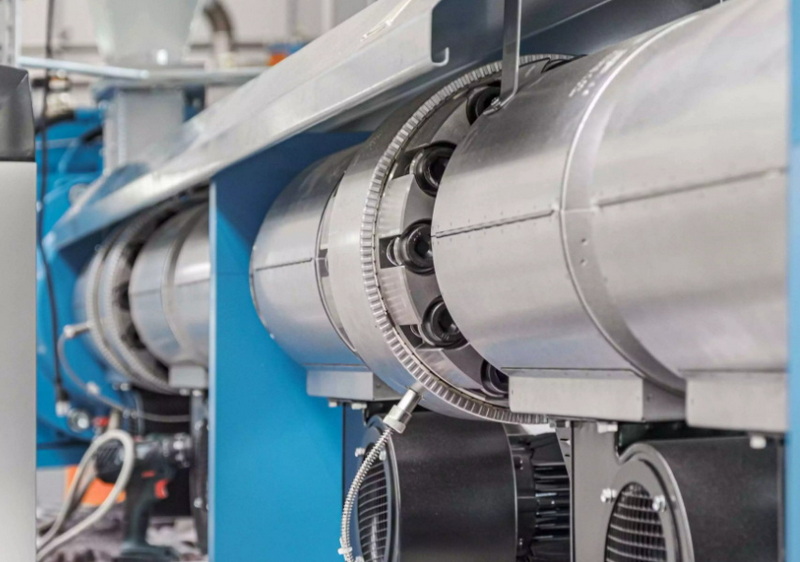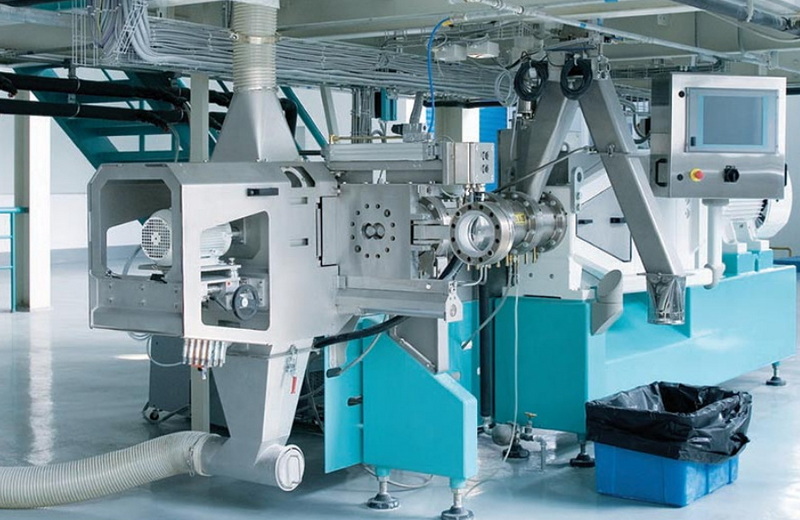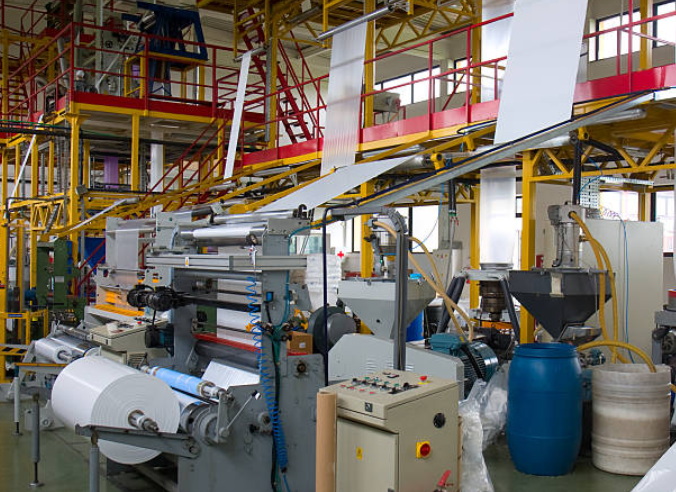Content Menu
● Introduction to PVC Panel Extrusion Machinery
● The PVC Panel Extrusion Process Explained
>> 1. Feeding
>> 2. Melting and Mixing
>> 3. Extrusion Through the Die
>> 4. Calibration and Cooling
>> 5. Haul-Off and Cutting
>> 6. Surface Finishing
>> 7. Stacking and Packaging
● Key Components of PVC Panel Extrusion Machinery
● Types of PVC Panels Produced
● Raw Materials Used in PVC Panel Extrusion
● Advantages of PVC Panel Extrusion Machinery
● Applications of PVC Panels
● Operation and Maintenance Best Practices
● Innovations and Trends in PVC Panel Extrusion
● Conclusion
● FAQ
>> 1. What is the main function of PVC panel extrusion machinery?
>> 2. How does the extrusion process differ from injection molding?
>> 3. What are the key advantages of using PVC panels produced by extrusion?
>> 4. Can PVC panel extrusion machinery produce panels with different surface finishes?
>> 5. What maintenance is required for PVC panel extrusion machinery?
● Citations:
PVC panel extrusion machinery is at the heart of modern construction and interior design, enabling the efficient production of lightweight, durable, and aesthetically versatile panels used in ceilings, walls, and a variety of decorative applications. This comprehensive guide explores the technology, process, advantages, and applications of PVC panel extrusion machinery, providing a detailed understanding for manufacturers, engineers, and industry professionals.

Introduction to PVC Panel Extrusion Machinery
PVC panel extrusion machinery is a specialized set of equipment designed to manufacture PVC (polyvinyl chloride) panels through a continuous process known as extrusion. This process transforms raw PVC compounds into finished panels with consistent profiles, thicknesses, and surface finishes, making it a preferred method for high-volume, high-quality production[1][2][4].
PVC extrusion technology is widely used due to its ability to produce panels with diverse shapes, sizes, and surface treatments, catering to various architectural and decorative needs. The machinery is engineered for efficiency, automation, and precision, ensuring uniformity and reliability in every panel produced[2][3][4].
The PVC Panel Extrusion Process Explained
The core of PVC panel extrusion machinery lies in the extrusion process—a high-volume manufacturing method where raw PVC materials are melted and shaped into continuous profiles[1][2]. Here is a step-by-step breakdown of how the process works:
1. Feeding
Raw PVC materials, often in the form of powder or pellets, are fed into the extruder's hopper. These materials typically include PVC resin, calcium carbonate, stabilizers, lubricants, and pigments[2].
2. Melting and Mixing
Inside the extruder barrel, a specially designed screw rotates, conveying the raw materials forward. The screw comprises three main zones:
- Feed Zone: Where materials enter and begin to heat up.
- Melting Zone: Where the temperature increases, melting the PVC and mixing additives uniformly.
- Metering Zone: Where the molten PVC is homogenized to ensure consistent temperature and composition[1].
3. Extrusion Through the Die
The molten PVC is forced through a die, which shapes the material into the desired panel profile. The die determines the panel's width, thickness, and surface features. By changing the die, manufacturers can produce different panel shapes and sizes[1][2][4].
4. Calibration and Cooling
The extruded panel passes through a vacuum calibration table, which cools and solidifies it while maintaining precise dimensions. Water or air cooling systems are commonly used to control temperature and prevent warping[2][4].
5. Haul-Off and Cutting
A traction or haul-off machine pulls the solidified panel through the line at a controlled speed. An automatic cutting machine then cuts the continuous panel into specified lengths[2][3].
6. Surface Finishing
Panels can undergo additional surface treatments, such as lamination, hot stamping, or printing, to enhance appearance and functionality. These finishing steps can add textures, colors, and protective layers[2][4].
7. Stacking and Packaging
Finished panels are stacked and packaged for storage or shipment, ready for installation in various applications.
Key Components of PVC Panel Extrusion Machinery
A typical PVC panel extrusion line consists of several interconnected machines, each playing a critical role in the production process[2][3][4]:
| Component | Function |
| Screw Feeder | Automatically feeds raw materials into the extruder |
| Conical Twin Screw Extruder | Melts, mixes, and conveys PVC compounds |
| Extrusion Die | Shapes the molten PVC into the desired panel profile |
| Vacuum Calibration Table | Cools and calibrates the panel to precise dimensions |
| Haul-Off Machine | Pulls the panel through the line at a controlled rate |
| Automatic Cutting Machine | Cuts the extruded panel into set lengths |
| Stacker | Collects and organizes finished panels |
| Surface Finishing Units | Apply lamination, hot stamping, or printing as needed (optional) |
| High-Speed PVC Mixer | Pre-mixes raw materials for consistent quality (optional) |
Each component is engineered for durability, precision, and ease of operation, contributing to the overall efficiency and quality of the extrusion process[2][4].
Types of PVC Panels Produced
PVC panel extrusion machinery is highly versatile, capable of producing a wide range of panel types:
- Ceiling Panels: Lightweight, decorative panels for residential and commercial ceilings.
- Wall Panels: Durable, easy-to-clean panels for interior wall cladding.
- Profiles: Custom-shaped profiles for architectural and structural applications.
- Decorative Panels: Panels with embossed, printed, or laminated surfaces for enhanced aesthetics[2][4].
Panel dimensions can vary widely, with common widths ranging from 200mm to 600mm or more, depending on the extrusion die and machinery configuration[2][4].

Raw Materials Used in PVC Panel Extrusion
The quality and properties of PVC panels depend largely on the formulation of raw materials. A typical recipe includes[2]:
| Raw Material | Function |
| PVC Resin SG-5 | Main synthetic plastic polymer |
| Calcium Carbonate | Filler to reduce cost and improve rigidity |
| Stearic Acid | Heat stabilizer and lubricant |
| PE Wax | Lubricant, improves surface properties |
| Whitening Agent | Enhances brightness and whiteness |
| Titanium Dioxide | Pigment for UV resistance, opacity, and gloss |
| CPE (Chlorinated PE) | Improves weathering, flame retardance, and flexibility |
The precise formulation is adjusted based on the desired panel properties, such as fire resistance, flexibility, color, and surface finish[2].
Advantages of PVC Panel Extrusion Machinery
PVC panel extrusion machinery offers several significant advantages for manufacturers and end-users:
- High Production Efficiency: Continuous extrusion enables large-scale, high-speed production with minimal downtime[1][2][3].
- Consistency and Precision: Automated controls and precision dies ensure uniform panel dimensions and quality[1][2].
- Versatility: Ability to produce a wide range of panel shapes, sizes, and surface finishes by changing dies and finishing units[2][4].
- Cost-Effectiveness: Use of fillers and automation reduces material and labor costs[2].
- Customization: Panels can be tailored for specific applications with custom colors, textures, and properties[2][4].
- Environmental Benefits: Many PVC panels are recyclable, and the process generates minimal waste[4].
Applications of PVC Panels
PVC panels produced by extrusion machinery are widely used across various sectors due to their durability, ease of maintenance, and aesthetic appeal:
- Residential Construction: Ceiling and wall panels for homes, apartments, and villas.
- Commercial Buildings: Decorative cladding in offices, shopping malls, and hotels[4].
- Public Spaces: Wall protection and decorative panels in hospitals, schools, and airports.
- Industrial Facilities: Hygienic wall and ceiling solutions for factories and warehouses.
- Retail and Hospitality: Custom panels for brand stores, restaurants, and showrooms[4].
Their resistance to moisture, fire, and chemicals makes PVC panels ideal for environments requiring hygiene and durability.
Operation and Maintenance Best Practices
To maximize the lifespan and performance of PVC panel extrusion machinery, manufacturers should adhere to several best practices:
- Regular Cleaning: Prevent buildup of PVC residues in the extruder and dies.
- Temperature Control: Monitor and maintain optimal barrel and die temperatures to avoid material degradation[1].
- Lubrication: Ensure moving parts are properly lubricated to reduce wear.
- Inspection: Routinely check screws, barrels, and dies for signs of wear or damage.
- Calibration: Regularly calibrate the vacuum table and cutting machines for precise panel dimensions.
- Training: Provide operators with ongoing training on machine operation and safety protocols.
Proactive maintenance minimizes downtime and ensures consistent product quality.
Innovations and Trends in PVC Panel Extrusion
The field of PVC panel extrusion machinery is continually evolving, driven by technological advancements and market demands:
- Automation and Smart Controls: Integration of PLCs, touchscreens, and IoT monitoring for enhanced process control and data analysis[4].
- Energy Efficiency: Development of extruders with optimized screw designs and efficient motors to reduce energy consumption.
- Eco-Friendly Materials: Increased use of recycled PVC and bio-based additives to improve sustainability.
- Advanced Surface Finishing: Adoption of digital printing, embossing, and high-gloss laminations for premium panel aesthetics.
- Modular Machinery: Flexible extrusion lines that can be quickly reconfigured for different panel types and sizes.
These innovations help manufacturers remain competitive and responsive to changing customer preferences.
Conclusion
PVC panel extrusion machinery is a cornerstone of modern panel production, enabling the efficient, precise, and customizable manufacturing of panels for a wide range of applications. By understanding the extrusion process, machinery components, material formulations, and maintenance practices, manufacturers can optimize production, ensure product quality, and meet the evolving needs of the construction and interior design industries.

FAQ
1. What is the main function of PVC panel extrusion machinery?
PVC panel extrusion machinery is designed to melt and shape raw PVC materials into continuous panel profiles, which are then cut to length and finished for use in ceilings, walls, and decorative applications[1][2][4].
2. How does the extrusion process differ from injection molding?
Extrusion is a continuous process where molten PVC is forced through a die to create long, uniform profiles, while injection molding involves injecting molten plastic into individual molds to form discrete parts[1].
3. What are the key advantages of using PVC panels produced by extrusion?
PVC panels offer benefits such as lightweight construction, resistance to moisture and fire, ease of cleaning, and the ability to customize colors and textures. The extrusion process ensures high-volume, consistent production[2][4].
4. Can PVC panel extrusion machinery produce panels with different surface finishes?
Yes, by integrating optional finishing units such as laminators, hot stamping machines, or printers, manufacturers can create panels with a variety of surface textures, colors, and patterns[2][4].
5. What maintenance is required for PVC panel extrusion machinery?
Regular cleaning, temperature monitoring, lubrication, and inspection of key components like screws and dies are essential for optimal performance and product quality. Operator training and scheduled maintenance also help prevent downtime[1][2].
Citations:
[1] https://leverwood.com/how-does-a-plastic-extrusion-machine-work/
[2] https://www.plastarmachinery.com/PVC-Ceiling-Wall-Panel-Production-Extrusion-Machine-pd46356289.html
[3] https://www.indiamart.com/proddetail/pvc-wall-panel-extrusion-machine-26089246462.html
[4] https://www.jwellextrusions.com/products/pvc-wall-ceiling-panel-extrusion-line/
[5] https://www.jwellmachine.com/what-is-a-pvc-panel-extrusion-line/
[6] https://jydjx.com/how-does-a-plastic-extrusion-machine-work/
[7] https://yyguotai.en.made-in-china.com/product/ByZQzakCLfWN/China-PVC-Panel-Extrusion-Machine-for-Ceiling-and-Wall-Panels.html
[8] http://www.anda-extruder.com/pvc-wall-panel-extrusion-machine-7507044.html
[9] https://yyguotai.en.made-in-china.com/product/ZCmnsLydlpkl/China-PVC-Ceiling-and-Wall-Panel-Extrusion-Machine.html
[10] https://www.friendplasticmachine.com/sale-10564037-white-pvc-panel-board-making-machine-decorating-board-extruder-machine-5-25mm-thickness.html






















